
From classy Kate Moss to scrambled eggs and chips. Few industries are more fickle than fashion, but Burberry's recent antics serve as a reminder of how difficult it is to stay relevant in the fast-paced world of high fashion.
In a desperate attempt to steal last year's September trend. During London Fashion Week, Burberry's marketing team went into overdrive preparing a takeover of various London venues.
For a few days, Bond Street tube station was transformed into «Burberry Street», the capital's black taxis were swathed in Burberry's new English rose motif and the popular north London greasy spoon café was decked out in the blue logo that has become a central feature of their latest designs.< /p>
This trick backfired.
< p>While new creative director Daniel Lee believed it was a clever way to convey the brand's distinctive British roots, many Londoners were unhappy with what was seen as one of the most blatant examples of «corporate creep».
Others saw it coming. something potentially more serious: further evidence that the once pioneering company had lost its way.
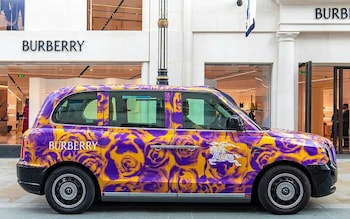 Many Londoners thought the «takeover» Burberry in London is a prime example of corporate sneaking.
Many Londoners thought the «takeover» Burberry in London is a prime example of corporate sneaking.
Burberry's problems began many years before the current regime — a double act consisting of CEO Jonathan Aykreid and the artistic talent of Lee. But rather than delivering its promised return to catwalk dominance, Burberry has fallen further out of fashion.
Profits have fallen, debts have risen and share prices have collapsed, leaving rivals, former executives and City pundits to wonder. where did it all go wrong.
Burberry shares are trading at £10.32 (the cheapest price in 12 years) and there are fresh rumors that the company, which famed share collector Nick Train described as «sui generis in the context of the British stock market», is again a takeover target. for foreign predators and direct investment.
There seems to be no doubt who the board of directors blames for these ills. Having announced a 40% fall in annual profits last month, Akeroyd turned down a £2.3m annual bonus on top of his £1.1m annual salary.
Danuta Gray, chair of Burberry's remuneration committee, said it would be «inappropriate» for Akeroyd to take a bonus. In an age when rewards for failure have become all too common in boardrooms, it was a rare public snub.
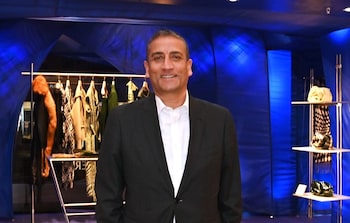 Burberry boss Jonathan Akeroyd has given up his £2.3m annual bonus after profits fell 40 per cent. Photo: Dave Benett/Getty Images for Burberry
Burberry boss Jonathan Akeroyd has given up his £2.3m annual bonus after profits fell 40 per cent. Photo: Dave Benett/Getty Images for Burberry
Awarding an award to finance director Kate Ferry for her «outstanding contribution to the wider field» did little to ease Akeroyd's disappointment.
The question now is whether the writing is on the wall for the man who traded Versace. for Burberry in 2022, receiving an amazing package.
As part of the move from Milan to London, Akeroyd was handed an upfront transfer payment of £6 million and an opportunity to earn £11 million. if certain performance targets have been achieved.
However, any changing of the guard at Burberry would be the decision of City leader and chairman Gerry Murphy, whose renowned retail acumen allows him to split his time between Burberry and Tesco, where he was named chairman last year.
Was the departure last week of marketing director Rob Hanley a harbinger of more high-profile departures in the coming months?
The company was recently forced to deny that it was looking for a potential replacement for Akeroyd after reports on the fashion blog Miss Tweed that Murphy had begun secretly interviewing candidates.
Burberry responded with a categorical denial: “We don’t comment on unfounded speculation, but We want to be clear: Jonathan has the full support of the Burberry board.”
Some wonder whether part of the problem lies with the board, which is big but light. “I don’t recognize anyone on this list,” said one former executive.
Is the power hitter willing to ask the tough questions?
Or is the bigger problem a lack of fashion sense at board level? Of the 10 non-executive executives, only two worked in the luxury goods industry.
Murphy is more of a retailer on his own than DKNY. He ran B&Q owner Kingfisher for almost five years and left in 2007 when its shares were trading at about the same level as when he joined. Meanwhile, in a company where heritage is perhaps its most unique asset, there are only two Britons, one of whom is an accountant.
More changes in leadership are likely to reflect poorly on Murphy. Burberry is a company that has long made succession changes a drama, and that hasn't changed since he took over from Sir John Peace in 2018.
The departure of Akeroyd's predecessor, luxury market veteran Marco Gobbetti, in 2021 took the board so by surprise that it appeared to have no successor.
A year later, chief designer Riccardo Tisci resigned and chief financial officer Julie Brown left for pharmaceutical giant GSK. .
On the other hand, there are serious doubts about the direction in which Burberry is heading under Akeroyd's leadership. After last month's big earnings, analysts blasted the company's strategy.
Bernstein analyst Luca Solca said it was clear Burberry was «significantly behind competitors and the market», adding: «Regardless of the reason, the brand's relaunch plan is not working at this time.»
Citibank analysts said: «So far The jury is still out on whether Daniel Lee's brand aesthetic can translate into stronger commercial success and double-digit growth.»
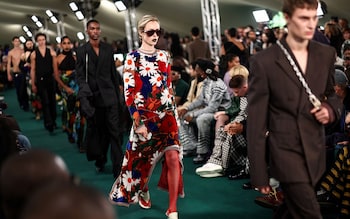 Burberry executives have been accused of prioritizing advertising over brand DNA. Photo: HENRY NICHOLLS/AFP via Getty Images
Burberry executives have been accused of prioritizing advertising over brand DNA. Photo: HENRY NICHOLLS/AFP via Getty Images
As UBS urged clients to sell shares, it wondered whether the muted response to the brand refresh meant the turnaround could be more costly to succeed. Burberry «may have to increase its expenses and reinvest gross profits,» it said.
“Our discussions with selected wholesalers indicate that its price is too high, resulting in fewer orders year on year, while some social media trends also do not suggest any 'buzz' among consumers,” the bank added . /p>
Fabio Becheri, a former director of Gucci, says the company's problems predate Akeroyd, but were exacerbated by a decision to try to boost sales of handbags and other accessories.
He said: “Burberry made serious mistakes: Gobbetti tasked Tisci with creating immediate buzz without taking into account the brand's DNA, and Daniel Lee operating in an upscale context with an accessories-led strategy — it's the wrong mission.
Akeroyd admitted the company had fallen short of expectations, while criticizing the government's so-called tourist tax for hitting spending by foreign tourists. Management also pointed to a broader decline in spending on luxury goods, especially among Chinese buyers.
There have been repeated questions about whether Burberry is too tied to China, where the company accounts for 30% of its sales. Can this continue amid rising tensions between Beijing and the West? Will Chinese shoppers still want to wear Burberry's iconic checks as much as they once did?
Train acknowledged that the fall in Burberry's share price was «humiliating» and called concerns about weakening Chinese demand «justified.» but notes that he “has every chance of participating in the next upswing.”
Until that happens, Akeroyd's ambitions to boost revenue to £5bn look like a fantasy, especially as the company's latest annual turnover fell to just £3bn.
Its difficulties stand in stark contrast to the days of Burberry wowed the runways with the vivacious Kate Moss leading advertising campaigns in the late 1990s.
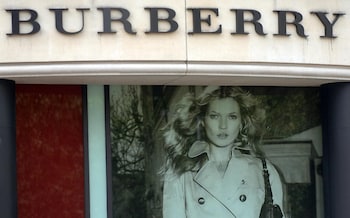 Burberry's recent struggles show a stark contrast from the days when Kate Moss fronted advertising campaigns. Photo: EDDIE MULHOLLAND
Burberry's recent struggles show a stark contrast from the days when Kate Moss fronted advertising campaigns. Photo: EDDIE MULHOLLAND
On a visit this week to the expensively restored Bond Street store, there was little to indicate that a return to the glory days was imminent.
On a sunny Wednesday afternoon, there were just a few customers inside, immaculately presented. It was clear how the staff stood and was bored. Even fewer shoppers walked away having bought something.
One of those who made a purchase, Jamie, a London-based stylist, praised how the designers kept the «classic shape» of their clothes, «while making everything a little more modern However, Sæmundur and his girlfriend Tinna, both 25, from Iceland, were left empty-handed and clearly underwhelmed: “It’s a little expensive and it’s not that interesting.” , — Samundur says. «I'm not a big fan, I know [Tinna] likes coats… my grandmother has something similar,» he adds.
As Burberry desperately tries to revive its image, it will have to convince customers that he represents the future of fashion, not the past.
Burberry declined to comment.











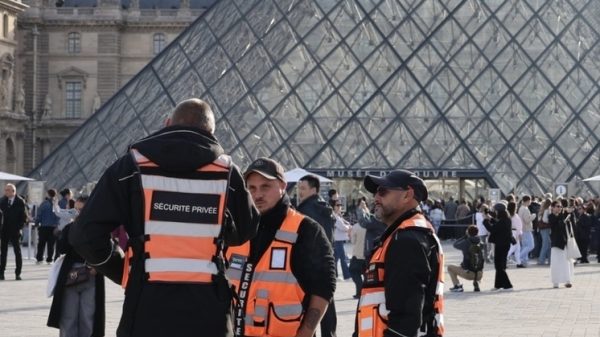




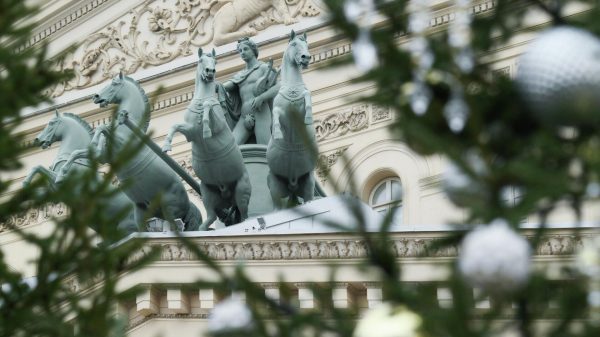



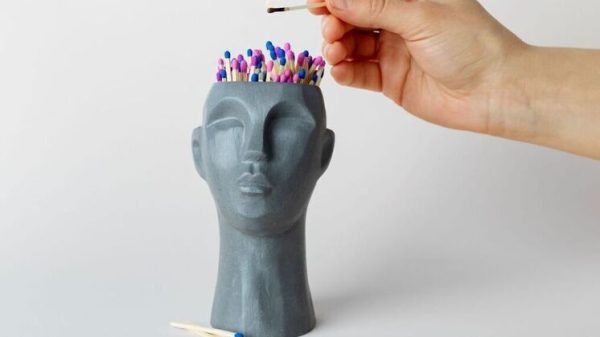



































Свежие комментарии